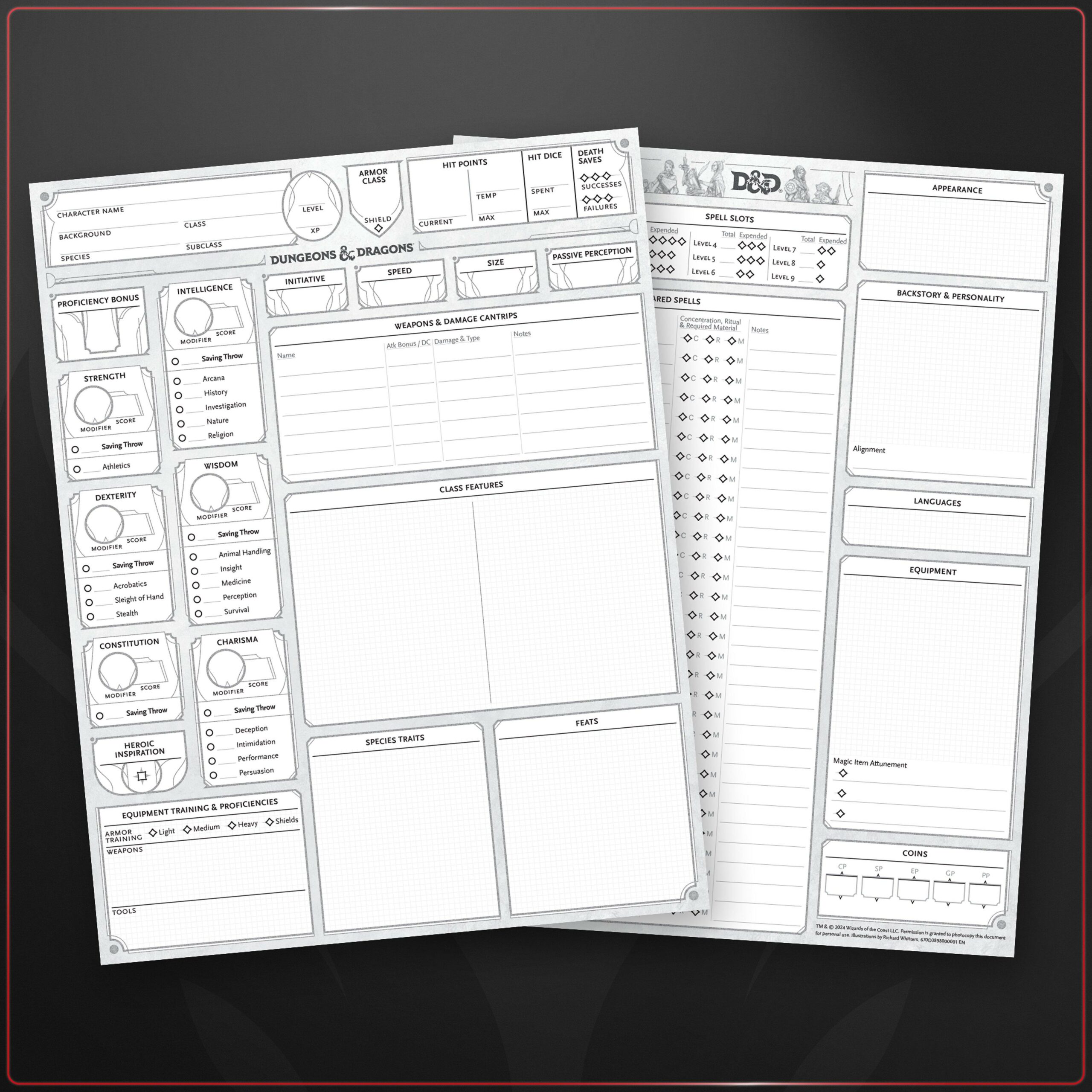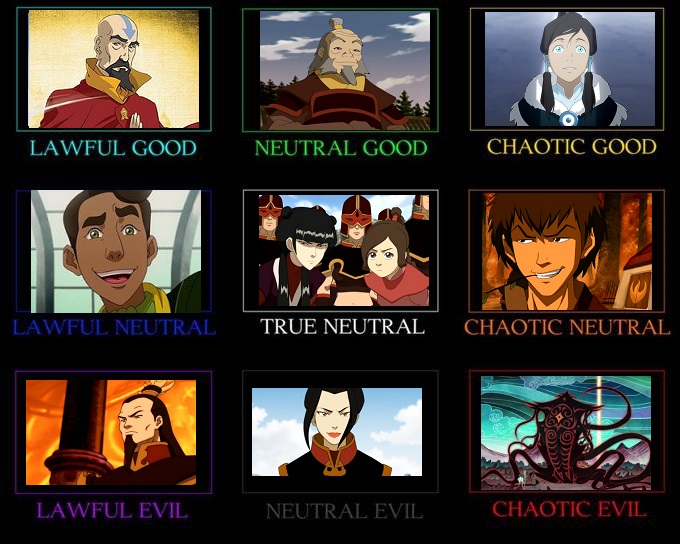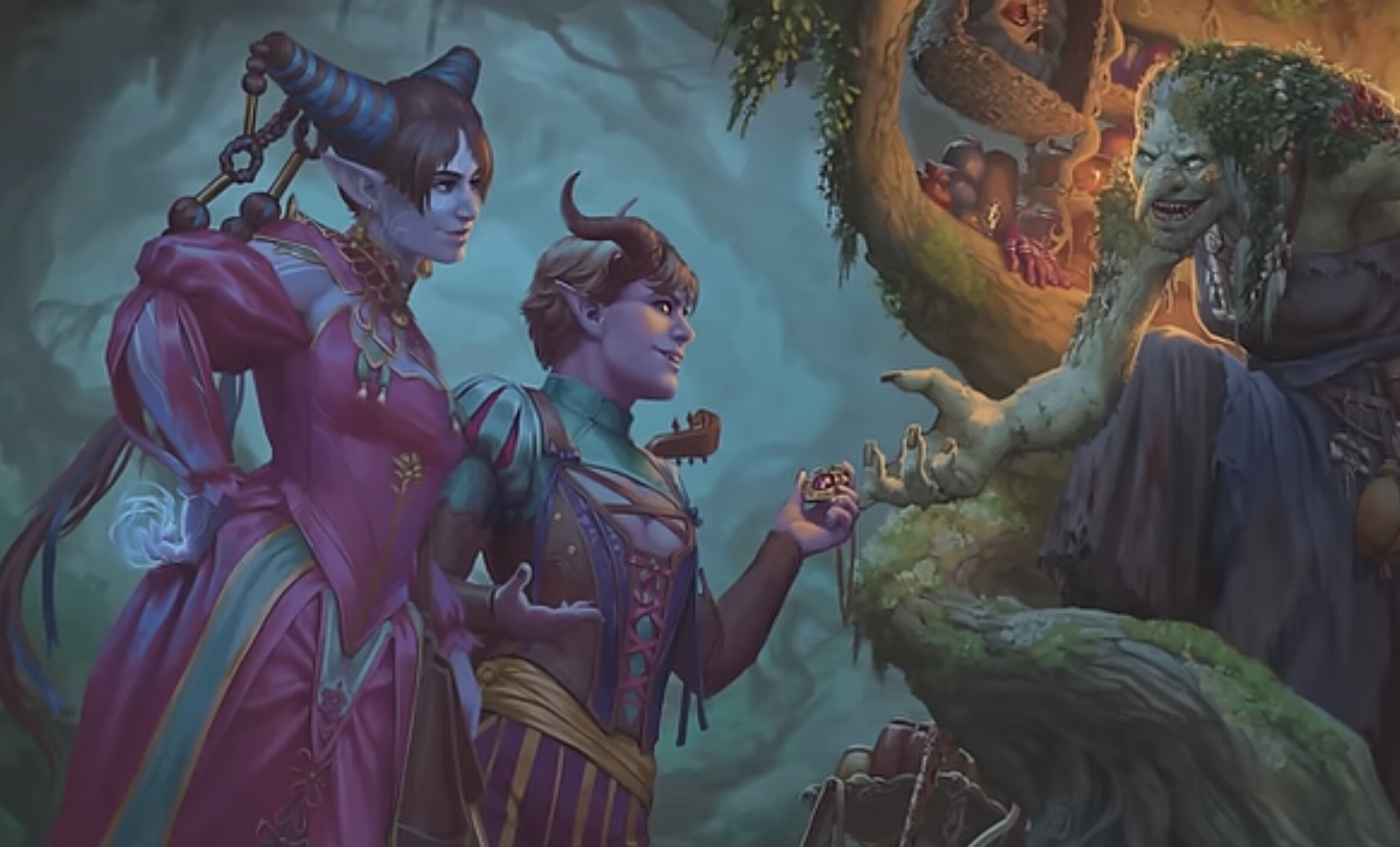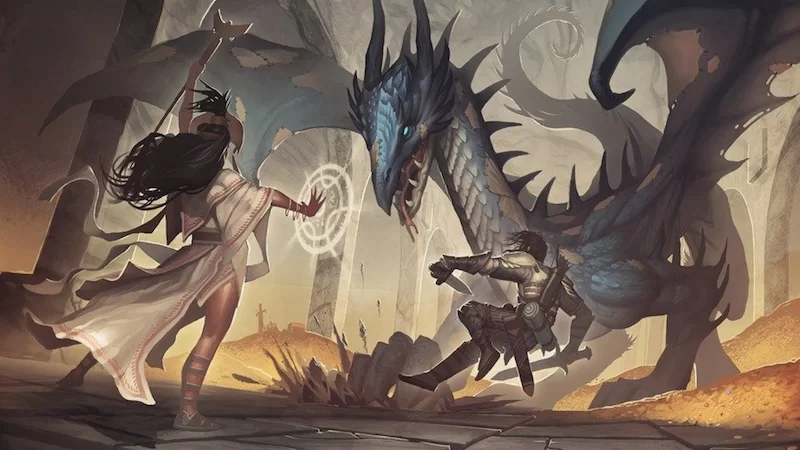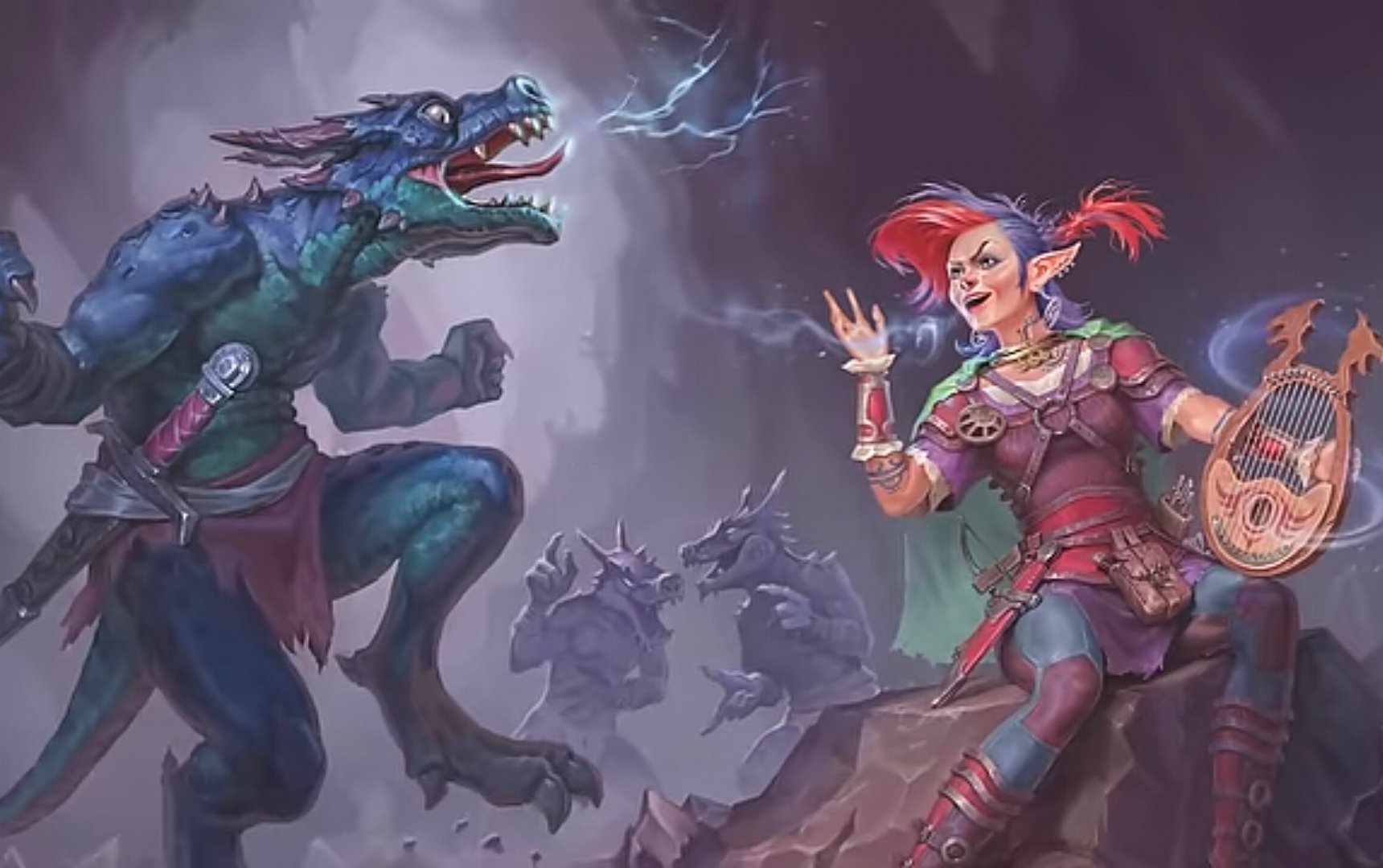Just How Does D&D Alignment Work, Anyway?
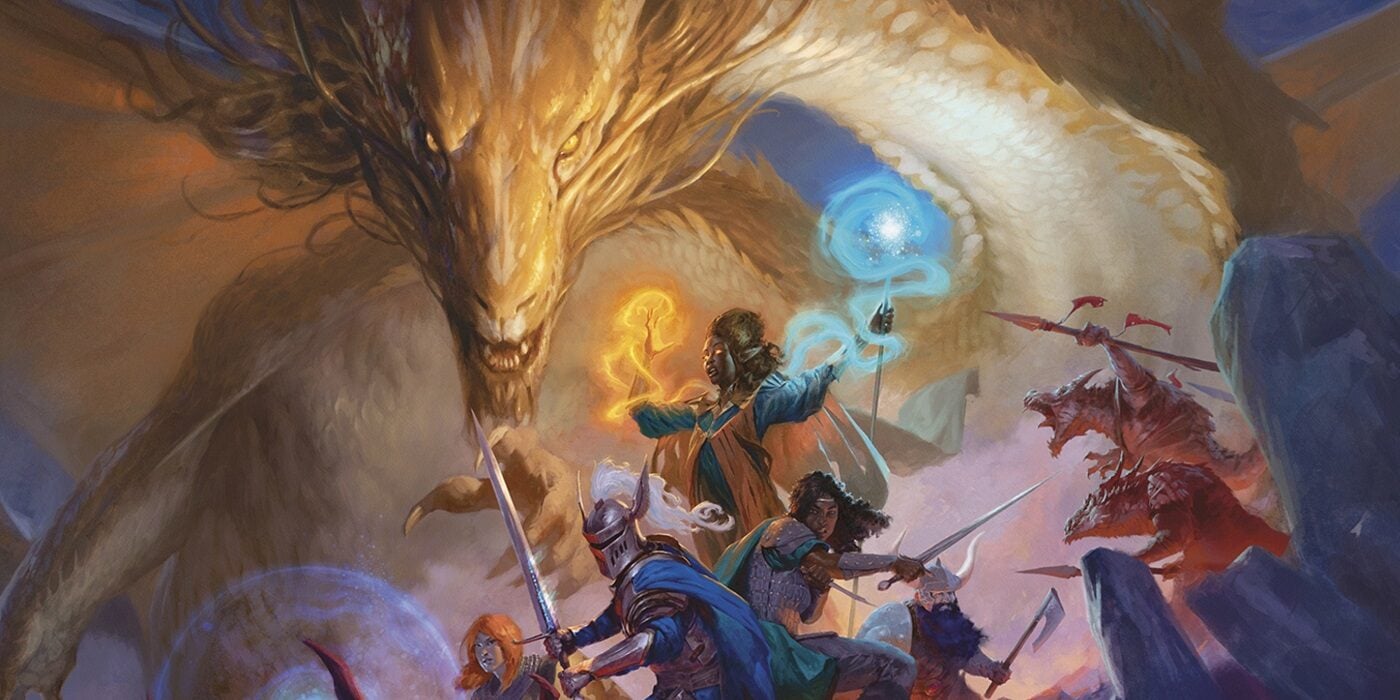
Every D&D character sheet has a spot for your alignment. But what is this? What are the options, and how does it affect the game?
Are you playing a lawful good character? Maybe your characters tend to lean a little more evil? Or do you enjoy the chaos of a true neutral character? And honestly, does any of it even matter?
What Are D&D Alignments?
Since first edition, D&D has had a system of alignments. This is a very basic description of a character’s basic moral outlook and code. Broken up into nine distinctions, your alignment will describe your character on a scale of good to evil and lawful to chaotic. It’s sort of the Myers Briggs of D&D. And like Myers Briggs, it can be argued that alignment doesn’t really mean much of anything at all in practical terms.
Alignment in D&D is little more than a short-hand. It’s a handy tool for explaining your character’s ideals and morals quickly. But well written and played characters will have complexities that can’t be fit neatly into a box. Not to mention, anyone who has stuck with one character for a long times knows that sometimes that character grows, sometimes outgrowing their old alignment. But in the broadest of terms, character alignment is how you’ll describe your character’s moral code to the other players at the table, and may also act as a bit of a guide for how you play them.
The nine alignments are lawful good, neutral good, chaotic good, lawful neutral, neutral, chaotic neutral, lawful evil, neutral evil, and chaotic evil.
Lawful Good
These are the characters who aren’t just good, they’re good good. They follow the rules, respect authority, and believe in a strict code of ethics. A lawful good character will treat everyone with kindness and respect, but they also feel strongly about the law. This character likely equates law with justice with little room for gray area and classically have an idealistic view of the world.
Neutral Good
A neutral good character is doing their best to do what they consider “good.” They will probably still follow the rules, but aren’t strictly bound to them and see the benefit in some wiggle room. Is it okay to steal bread for a starving child? Lawful Good may say no and insist that it’s bought, but Neutral Good would weigh the child’s hunger higher than the rules.
Chaotic Good
Chaotic Alignments almost never care about other people’s definitions of good or evil. They dance to their own drums and live by nobody’s rules, including their own. But while the laws of the land may be effectively meaningless to this character, they’re probably still looking to leave as positive of a mark on the world as possible. They’re lawless, but they’re still good. And by their own definition they would consider themselves to be very moral.
Lawful Neutral
The neutral line is often the hardest to play because these characters aren’t really good or evil. They just are. A Lawful Neutral character may abide by the laws of the land, or their own moral code, but either way they do with do it with conviction. They may not care much about what’s right or wrong, but they do care about following their specific code of conduct.
True Neutral
This character will do what’s best for themselves in the moment. Laws, moral codes, and ethics are all flexible for a True Neutral character. This may be a character that needs a monetary motivation to jump into action or join the team. Their convictions aren’t strong, but they also don’t have a whole lot holding them back.
Chaotic Neutral
While a True Neutral character may do whatever it takes to get the job done (with the right motivation), a Chaotic Neutral character is a true wild card. They can be sometimes characterized as selfish and thoughtless, but they’re also not openly cruel or evil. They’re just self interested, go against the grain, and have a tendency for making the decisions nobody saw coming.
Lawful Evil
This is a character who follows strict rules, but does so for evil. These are your evil overlords or killers who only target people they deem bad for whatever reason.
Neutral Evil
Neutral Evil is happy to do harm if it furthers their own self interest or stand back and allow harm to happen if it means that they are fine. They aren’t guided by maliciousness and the cruelty isn’t the point for them, but it’s also never ever a deal breaker.
Chaotic Evil
These are the characters who are needlessly malicious. Their violence may be completely random and unpredictable, and it’s because they don’t care about anything but their own interests. This alignment is often greedy, but they can also just be cruel for the fun of it.
Is Alignment Necessary in 5E?
Sometimes. In many cases, alignment is a good thing to reference in keeping in mind how your character would act and treat people. But in reality it will have very little bearing on how people actually play their character. However, there are some magical items that require a character to be good or evil. So for technical reasons, your character SHOULD have an alignment listed. But will you use that alignment as intended? May not.
Happy adventuring!

